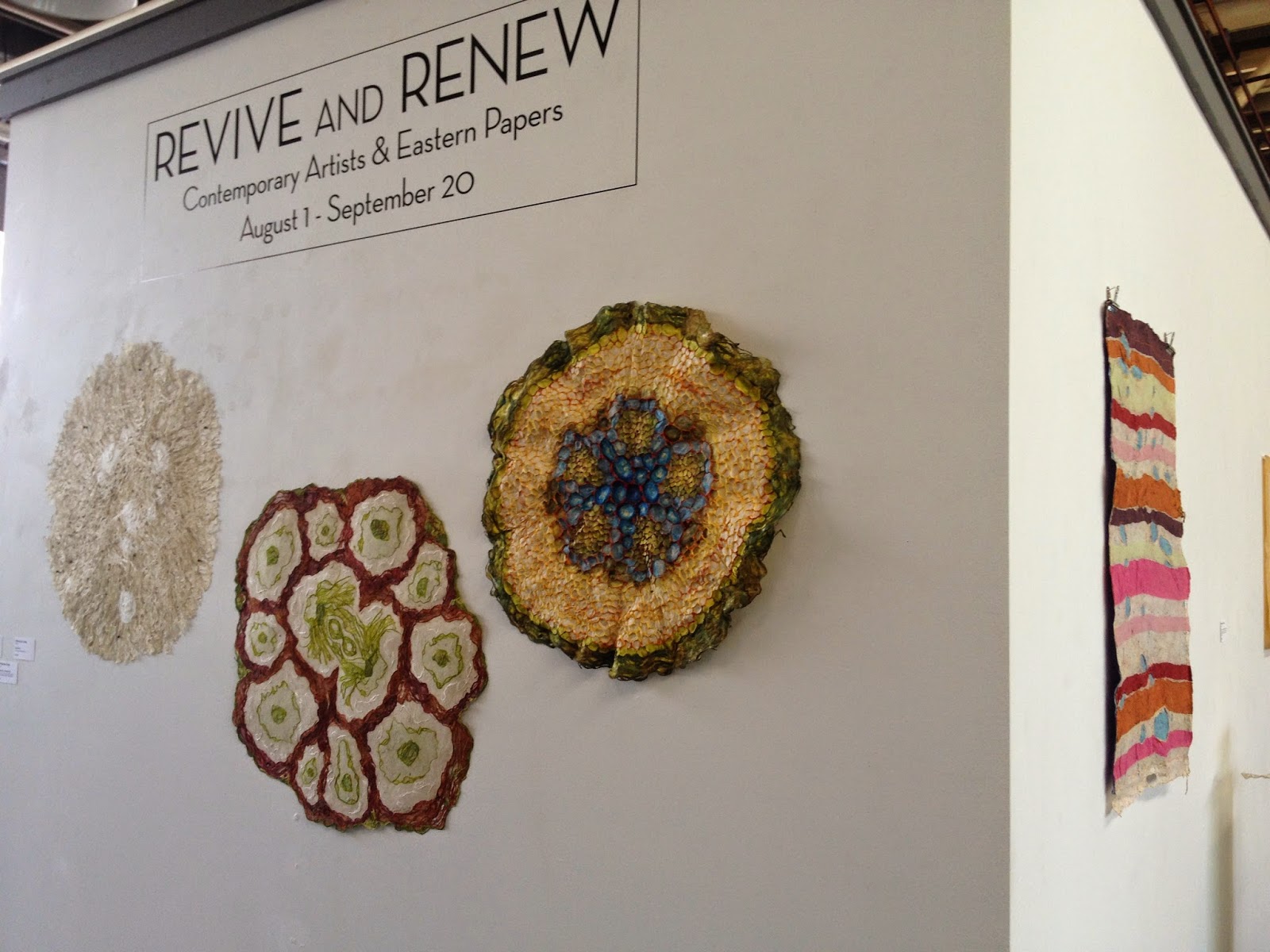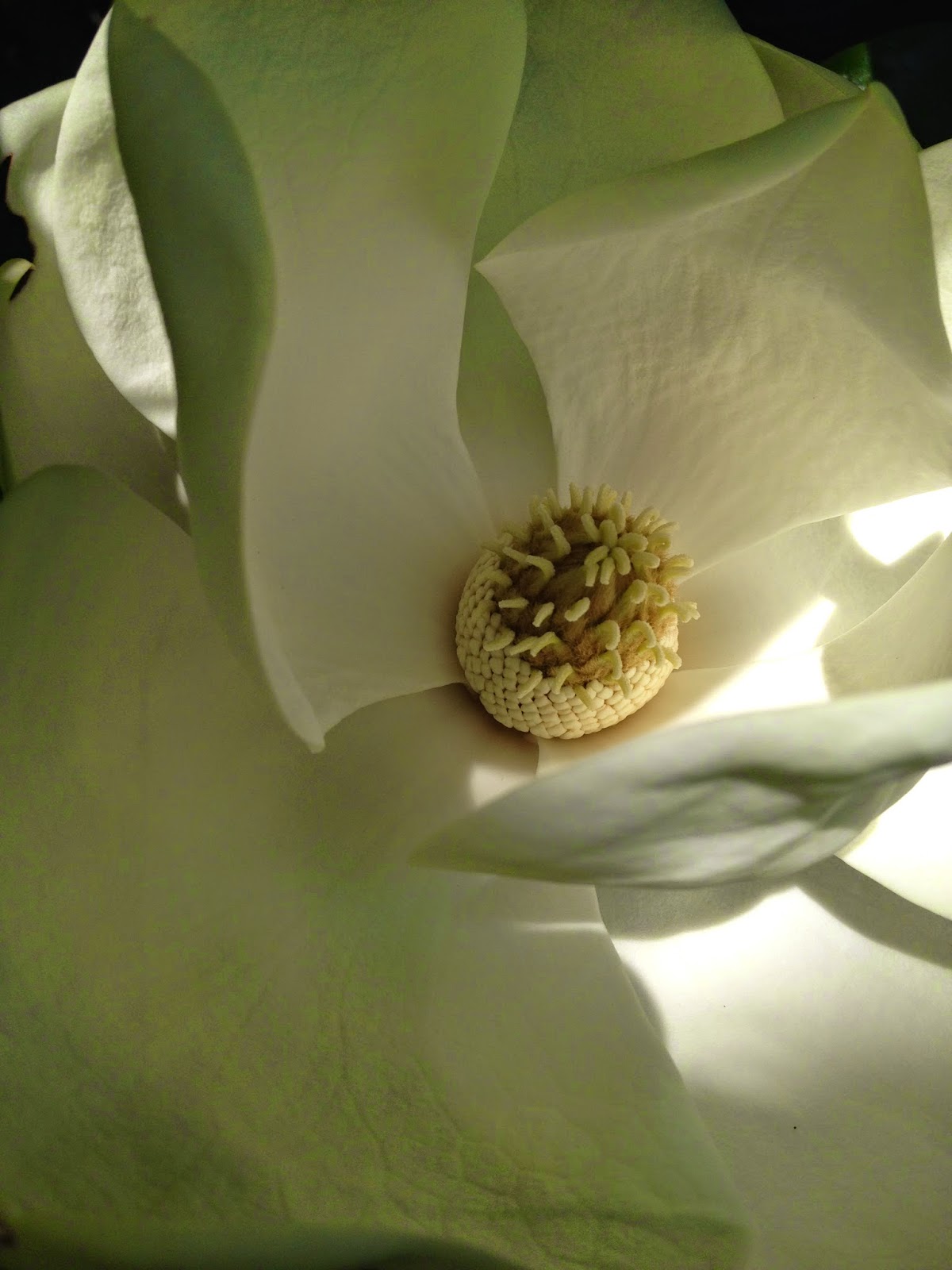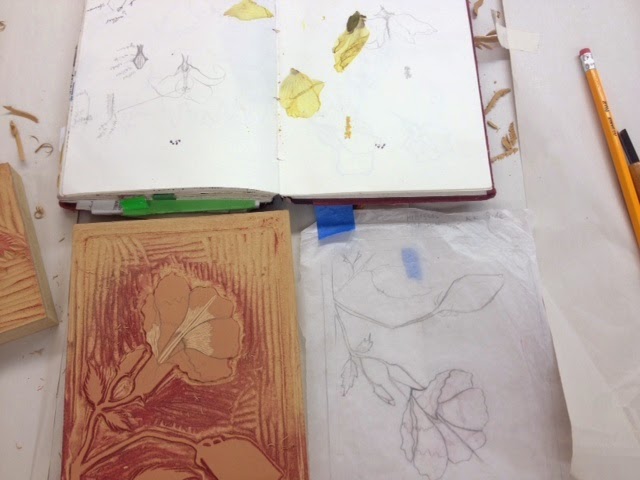This August I attended a five day workshop with Melissa Jay Craig at the Morgan Paper Conservatory - a huge warehouse with all the book arts facilities you could possibly want in one giant, open space. The atmosphere at the Morgan was extremely welcoming and inviting. People were very warm, kind and interested in the workshop and each others' work. Melissa is an extremely skilled generous instructor who was an absolute pleasure to work with. She helped me forward my thesis work during the class.

Looking in from the back end of the space, where they have their own Kozo garden!
The large paper making facility
The entrance opens into a large divided gallery space with lots of natural light and rotating exhibitions. The current show on display was called Revive and Renew showcasing contemporary artists who work with eastern papers
The letterpress studio is to the right of the gallery
Melissa's beautiful work
She cast this piece over river stones. Each part of this piece has been carefully painted by hand using fabric dye
We learned many different techniques for sculpting paper. One was dip casting (the shaped face on the left). Another was casting wet sheets over wire armatures. The wire would rust lending an artifact like quality to the piece
The other involved embedding wire in paper and letting it air dry. The highly beaten fiber shrinks as it dries and the wires morph with it
The third and most beautifully seamless method was casting wet sheets over removable armatures
 Melissa also covered Kozo dyeing and casting
Melissa also covered Kozo dyeing and casting
The Kozo is lightly beaten to soften it up for making bark lace

It is teased apart carefully using your fingers and formed on an armature. Here Melissa is shaping it using a teflon folder
Trying to make a shape suitable for a dip casting test. Needless to say, this attempt failed -
or rather, it would have taken many several dips to fill in those large spaces
A way of forming a sheet of a piece of wire without embedding it
The air dried sheet gets a soft texture and retains the shape the wire gives it
The first test for a removable armature, stuffed with fiber fill. The Lotus seed pod would be a two part mould. This is the bottom half of the piece. At this point, I was testing to see how much the paper would actually shrink, so I made the armature larger than it needed to be
The top half was fun to make. The strips of wet paper are laid down horizontally for the first pass, and then vertically for the next two passes. There is a layer of methyl cellulose between each layer. In order to make the holes where the seeds would eventually sit, I used an awl to part the fiber on each layer.
It helped using a dark coloured cloth for the armature because that way I could see the layer underneath a lot better
We used unbleached abaca for this class, so as it dried, it became a lot darker. The base piece for the pod is drying at the back
 | |
| The two pieces dried and sitting together. They can be re-shaped when the colour is added. Painting on the dye helps cover any overlaps or attachments that would be visible in a piece like this one. It also re-introduces moisture into the paper allowing for re shaping. |
Making the seeds
Making the Lotus root in three separate parts. Because the shapes were so awkward, the fiber fill that the armatures were stuffed with had to be removed with tweezers. This makes the armature collapse after the piece is dry, making it easy to remove!
The second layer of paper
The third layer
Adding some bark lace to the bottom gave it a bit more life
The root all finished, ready for staining
I chose to stain the pieces with a blue dye. The colour represents the humidity, which is something that has always been present every time I've seen a Lotus. It also represents the Cosmos, which is what the Lotus symbolizes


























































